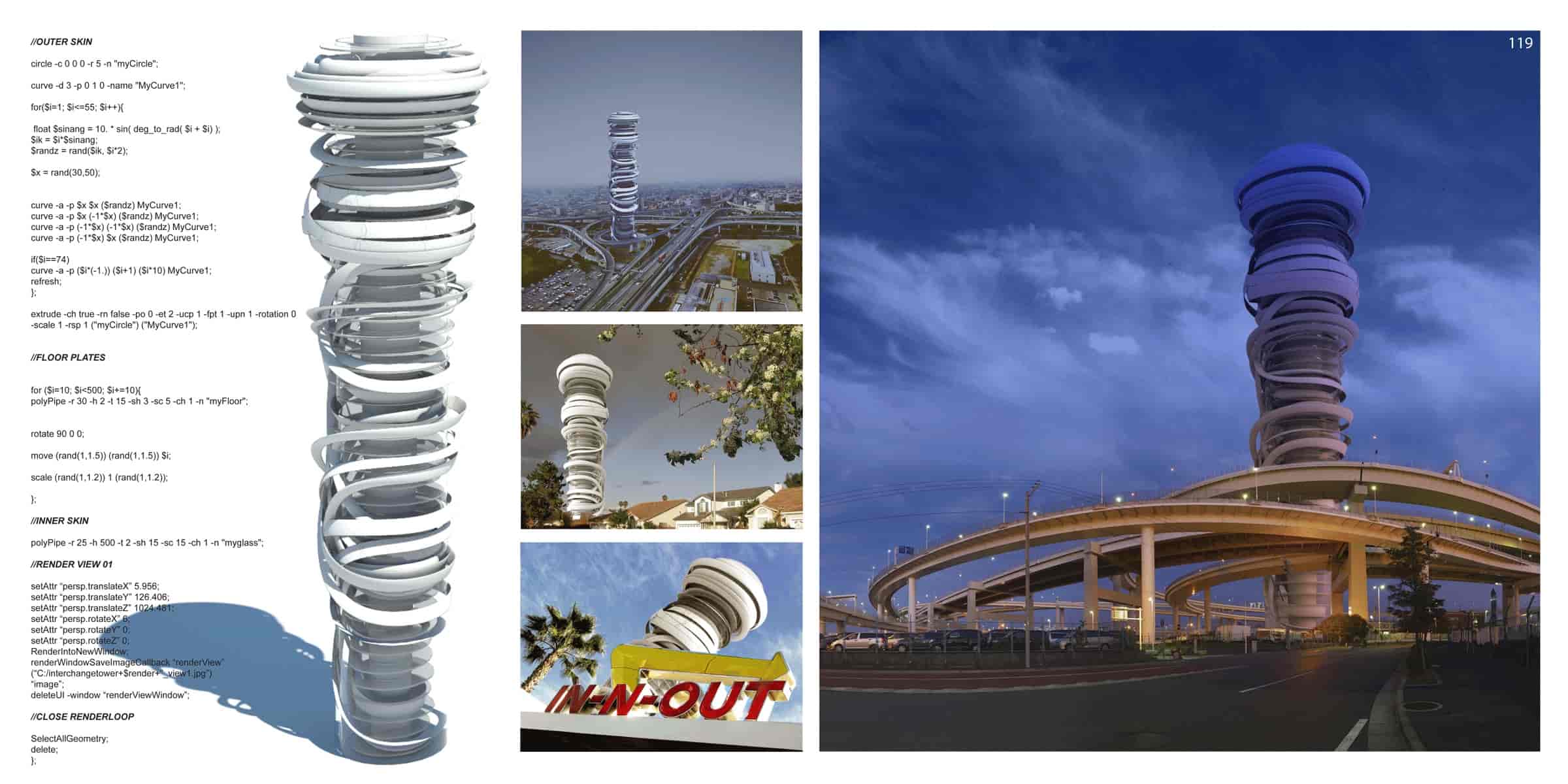Special Mention
2008 Skyscraper Competition
Christopher Talbott, George Tolosa
United States

The Freeway Interchange Tower seeks to reclaim the “throw-away” land often left in the wake of massive highway junctions, typically an abandoned, unattractive space at the center of maze-like crossings. These infrastructure nexus not only serve as transportation nodes, but also act as buffers between differing land conditions, uses, and city environments. In this particular site, the freeway interchange is bordered by low density residential neighborhoods on the south and east sides, a nearby institutional center to the north, and a major drainage canal to the northwest. With such proximity to varying uses and zoning regions, the interchange often becomes the separating barrier.
The intent of this proposal is to elevate the status of the interchange from utilitarian infrastructure to one of regional unifier. By sucking up the visual language of southern California’s formidable freeway system and coalescing it into an iconic high-rise, the tower can act as a symbolic ribbon that ties the area together, signifying the crossing points of the cities of Anaheim, Orange and Santa Ana. The mixed-use program of the tower – retail, commercial office and high end hotel near the top – completes the micro-arcology of the area, complementing existing nearby residential and recreational uses. At the same time, the tower reinforces the Southern California automotive culture, celebrating the constant dynamism and technological achievement of its impressive freeway system.
In a vision for the future of the these endless sprawl zones so ubiquitous to southern California, Interchange Tower would be the common place connecting and completing the local ecosystems. With the development of “community towers”, destination nodes would be created that enhance local economic stability (retail), relocate and diversify commercial office space, as well as form areas of vertical social density encompassing high end hotels and condominiums. Ironically, the Interchange Tower would serve to reduce the burden of excessive automobile transportation by creating waypoints; however, this intervention would also begin to render the mega interchange (its habitat) obsolete with the reduced need for such infrastructure.
In conceiving the idea of the Interchange Tower the parti was developed in which the freeway strata was brought quite literally into the tower, forming a symbiotic relationship between site context and object. As the automobiles are brought into the building, they would circulate up to the parking levels which are followed by retail and observation decks, office space, hotel, and final a sky lounge. In order to create a unified language based on the sweeping lines of the freeway below, the tower’s outer skin is composed of a helical ribbon of aluminum panels which serve two main functions; first and foremost a sound damping system to control the noise inherent of its surroundings, and secondly as a sun shading device which is more sinuous at the lower levels to allow more or less light at the upper levels, where solar shading is necessary.


This work is licensed under a Creative Commons License permitting non-commercial sharing with attribution. https://creativecommons.org/licenses/by-nc-nd/4.0/



